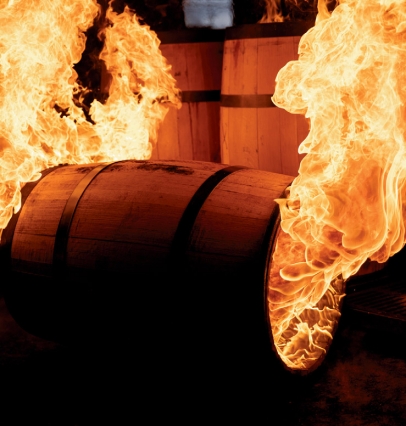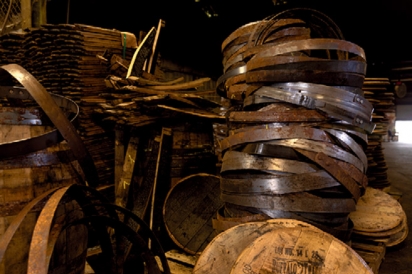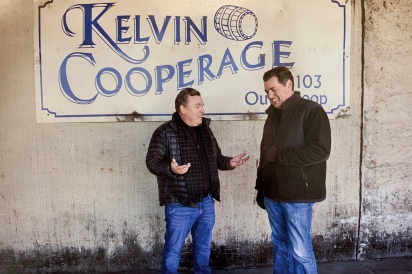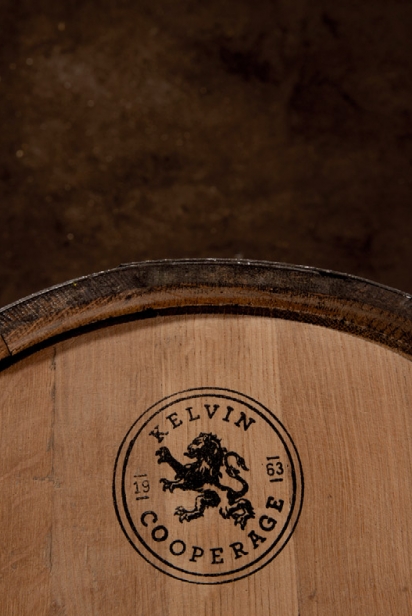Roll Out the Barrels
One could say Kevin and Paul McLaughlin were destined to become barrel makers. After all, their family ran a cooperage business on the banks of the River Kelvin in Scotland throughout most of their growing-up years.
Kelvin Cooperage served the barrel needs of major distilleries in Scotland, Ireland and beyond, primarily fixing used barrels for another round of production. The oldest son, Kevin, at age 15, decided he had had enough school and he “wanted to make some money,” so he committed to a four-year apprenticeship in the cooperage business.
Kevin eventually ended up back in school captaining the golf team at Pepperdine University while earning a degree in communications.
Shortly after his graduation in 1991, the momentous decision was made to close the plant in Scotland and move operations to the U.S., selecting Kentucky with its bourbon heritage—where barrels can be used only once in production. Since used barrels were to remain the focus of their business, Kevin explained the business rationale: “Why not actually locate in bourbon country, where barrels could be inspected and refurbished on-site rather than shipping them across the great ocean before even inspecting them as had been the practice?”
A forsaken cooperage plant on the outskirts of Louisville was identified and, with Kevin in the driver’s seat, some key specialized equipment was shipped from Scotland to the new location off Outer Loop in Louisville. While the focus remained on acquiring and refurbishing used barrels for delivery to their Scottish and other customers, Kelvin also began to make their own barrels—at first almost exclusively for the wine industry.
Kevin’s younger brother, Paul, took a more circuitous route to the family business. After earning an undergraduate degree from Harvard followed by a law degree from Notre Dame, Paul worked for several years at an international law firm. By 2001 business grow that Kelvin demanded more bodies present and Paul answered the call relocating to Louisville with his young family.
Today, Kevin and Paul operate as co-owners and everyday management of the highly regarded operation. Ever innovative, Paul arrived at a time when Kelvin began working with the emerging boutique bourbon masters like Angel’s Envy, Peerless and Rabbit Hole.
Kelvin Cooperage thrives in working with these newer players accommodating their requests for different woods and different charring techniques among other requests in order to differentiate emerging products now entering the marketplace. In fact, one very recent limited release was made by Four Gate Whiskey Company using ex-sherry rum barrels — a bottle they have labeled Kelvin Collaboration.
So, over the past years, why did they shift the majority of their business to new bourbon barrels? Paul explains, “When I first joined here in 2001, there were only six or seven heritage bourbon brands here in Kentucky, so it didn’t make any sense for us to even think about that market. All of their needs were being met by the big cooperage operations. It wasn’t until 2010 or 2011 that we even looked at it again. Our focus has definitely changed. When we were doing wine barrel production, it was mostly seasonal. Wine has stayed fairly steady, but whiskey has vastly overtaken it in volume.”
Displayed in their conference room, the large and growing collection of whiskeys that they’ve provided barrels for speaks to that shift in business. But it’s not until one walks out onto their production floor that the scope of their work truly hits home. The atmosphere is almost primal, with sparks flying through the air and men with hammers battering iron hoops into place. It’s a scene of well-ordered steam, fire, wood and iron being handled by long-term craftsmen.
While assembly at the larger cooperage houses are more mechanized, Kelvin Cooperage still does most of the process the old-fashioned way. Take barrel charring, for example. “Not having the barrels on a timer makes a huge difference,” says Paul. “We can judge and see how the barrels are doing. Each barrel can be a little different, and you lose out a bit when you eliminate personal judgment from the process.”
The Angel’s Envy website states, “They are proud to be among the brands aged in Kelvin Cooperage’s barrels. As a neighbor, they’ve been wonderful to work with.” Paul describes exactly what they’ve always loved most about the industry. “I like the people. In many ways, it’s a very old-fashioned industry. Most of our business is done on a handshake, and everyone’s good with that. It still works. And there’s a lot of cooperation, which is nice. We succeed in this together, so it’s wonderful that we all get along.”
Life Cycle of a Barrel
• A white oak tree, which grows in Kentucky, Missouri, Minnesota or Arkansas, is harvested and cut into rough staves and heading.
• After air-drying at the stave mill, the staves and heading are transported to Kelvin Cooperage for processing.
• At Kelvin Cooperage, the moisture content in the oak is equalized and the staves are raised into barrels. The barrels are bent and then toasted and charred to the distillers’ specifications over natural oak-burning fires.
• After air and water pressure testing, the barrels are shipped to distillers, including several favorite Louisville distillers. Distillers fill the barrels with their new-make spirit and allow the bourbon to mature in the barrel.
• Over the course of the seasons, the spirit expands and contracts inside the barrel and penetrates through the toast and char layer into the stave wood.
• When the distiller is satisfied that the spirit is matured, the barrel is emptied and the spirit is bottled.
• The empty barrel is sent back to Kelvin Cooperage where it is inspected and repaired if needed. The used barrel is now ready for refill, and is shipped to Scotland, Ireland, Japan, or any other destination where whisky is being made. The barrels are shipped whole via ocean freight in 40 foot shipping containers.
• Most used bourbon barrels travel overseas to other whisky markets where they are filled and re-refilled several more times. A smaller number are used by breweries for special barrel-aged beers and other projects. An even smaller number are used for other special projects such as hot sauces or honey aging. Even barrel parts are recycled and turned into art and furniture — nothing is wasted.
The Kelvin Cooperage Difference
Kentucky Peerless Distilling Company describes why they use Kelvin for their barrels: “They’ve opted to use a traditional, non-mechanized process, crafting and charring barrels by hand. Each barrel is handcrafted and treated with unrivaled care. The majority of cooperages typically utilize natural gas to toast and char their barrels, while Kelvin only utilizes a natural wood fire to toast and char their barrels. This painstaking practice ensures that no artificial flavors are imparted into our whiskey.”









